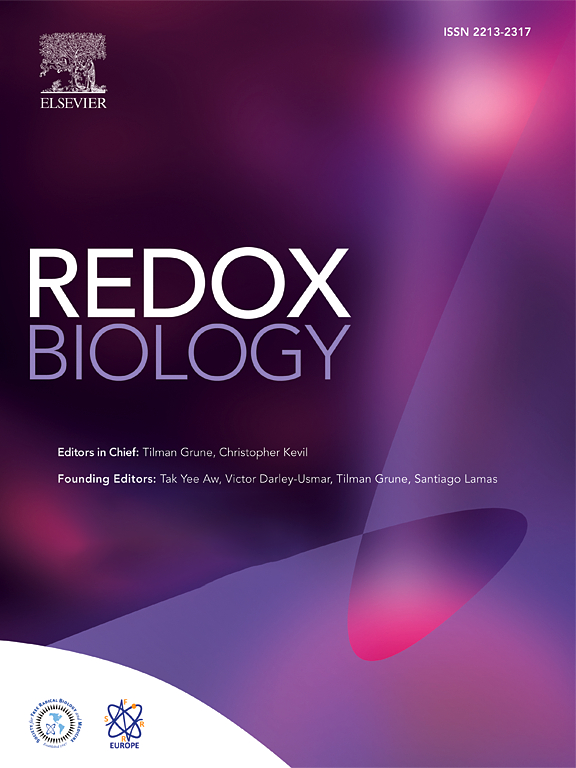Oxidative damage to lung mitochondrial DNA is a key contributor to the development of chemical lung injury
IF 10.7
1区 生物学
Q1 BIOCHEMISTRY & MOLECULAR BIOLOGY
引用次数: 0
Abstract
Humans exposed to chlorine (Cl2) due to industrial accidents or acts of terrorism may develop lung injury culminating to Acute Respiratory Distress syndrome and death from respiratory failure. Early molecular targets of inhaled oxidant gases suitable for pharmacologic modulation have not been established. Because the mitochondrial genome is highly sensitive to oxidant stress, we tested the hypothesis that mice exposure to Cl2 gas causes oxidative damage to the mitochondrial DNA (mtDNA) that triggers the development of acute and chronic lung injury. Cl2 gas-exposed C57BL/6 mice and returned to room air, developed progressive loss of lung DNA glycosylase OGG1, followed by oxidative mtDNA damage. This resulted in activation of inflammatory pathways by circulating DNA, progressive increased airway resistance, alveolar injury and acute pulmonary edema due to loss of epithelial amiloride-sensitive sodium channels. Mice not succumbing acutely displayed a delayed syndrome of progressive increase in airway resistance and emphysematous-like changes in lung morphology. Global proteomics of lungs harvested 24 h post Cl2 exposure revealed alterations in over 1500 lung proteins, including 14 key mitochondrial proteins. Intranasal instillation of a recombinant protein targeting OGG1 to mitochondria (mitoOGG1) at 1 h post exposure decreased oxidized lung mtDNA, alterations to the lung and mitochondrial proteomes, severity of the acute and delayed lung injury and increased survival. These data show that injury to the mt-genome is a key contributor to the development of acute and chronic lung injury after Cl2 gas exposure and point to mtDNA oxidation as a target for pharmacologic intervention.

求助全文
约1分钟内获得全文
求助全文
来源期刊

Redox Biology
BIOCHEMISTRY & MOLECULAR BIOLOGY-
CiteScore
19.90
自引率
3.50%
发文量
318
审稿时长
25 days
期刊介绍:
Redox Biology is the official journal of the Society for Redox Biology and Medicine and the Society for Free Radical Research-Europe. It is also affiliated with the International Society for Free Radical Research (SFRRI). This journal serves as a platform for publishing pioneering research, innovative methods, and comprehensive review articles in the field of redox biology, encompassing both health and disease.
Redox Biology welcomes various forms of contributions, including research articles (short or full communications), methods, mini-reviews, and commentaries. Through its diverse range of published content, Redox Biology aims to foster advancements and insights in the understanding of redox biology and its implications.
 求助内容:
求助内容: 应助结果提醒方式:
应助结果提醒方式:


